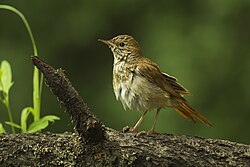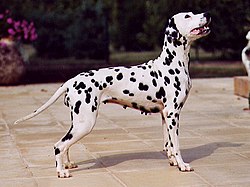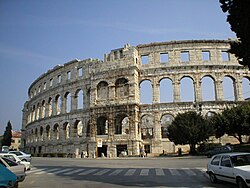| National animal |  | The European pine marten (Martes martes; Croatian: kuna zlatica) is a species of mustelid that is a semi-official national animal of Croatia. [33] It has a symbolic meaning, since marten pelts (marturina) were collected as tax by early Slavs, and because it appears prominently in the Croatian heraldry - this includes the national flag and the coat of arms, as well as historic and local emblems. [34] [35] [36] Banovac coins also included a marten figure, and it is a namesake of kuna, the former Croatian currency where it appeared on all obverse coin sides. The European pine marten is featured on the reverse side of the Croatian 1 euro coin. [37] |
 | The Atlantic bluefin tuna (Thunnus thynnus; Croatian: tunj or atlantska plavoperajna tuna) is a species of tuna native to Atlantic Ocean and the Mediterranean Sea. Besides their high commercial value as food, the big size, speed, and power they display as predators has attracted the admiration of fishermen, writers, and scientists. In the Croatian part of the Adriatic, tuna is farmed and exported in large quantities. [38] The Atlantic bluefin tuna was featured on the reverse side of the 2 kuna coin. [39] |
 | The common nightingale (Luscinia megarhynchos; Croatian: slavuj) is a species of small passerine bird known for its beautiful song. [40] Only males can sing, and their powerful and melodic sound has inspired pieces of poetry, opera, fairy tales, and books. [41] It is an insectivorous migratory bird that breeds in large parts of Europe, and it is common all over Croatia during spring and summer. The common nightingale was featured on the reverse side of the 1 kuna coin. [42] |
| National flower |  | The Croatian iris (Iris croatica; Croatian: perunika) is a bearded rhizomatous species of iris with branched stems and dark violet flowers that is endemic to temperate parts of Central Croatia and neighbouring Slovenia. It is on the Croatian list of strictly protected plants, [43] and is unofficially known as the national flower. [44] Within Croatia, it is found in areas like Žumberak Mountains and Medvednica. Its name in Croatian stems from that of Perun, the god of thunder in Slavic mythology. |
| National tree |  | The pedunculate oak (Quercus robur; Croatian: hrast lužnjak) is a species of flowering plant in the beech and oak family. It is a large tree, native to lowland temperate regions of Eurasia. 40,000 hectares of oak forests cover the Spačva basin in eastern Croatia [45] and the tree is widely present in national toponymy, as well as the lyrics to the national anthem where it represents strength and resilience. Additionally, the pedunculate oak branch was featured on the reverse side of the 5 lipa coin. [46] |
 | The olive (Olea europaea; Croatian: maslina) is a species of plant in the olive family. It is a small tree or a shrub that is native to the Mediterranean basin. Olive groves are widely cultivated in coastal parts and on islands of Croatia where they are used in the production of quality olive oil. A 1,600-year-old olive tree in the Brijuni National Park [47] that still gives annual fruit is the oldest one in Croatia. Additionally, the olive branch was featured on the reverse side of the 20 lipa coin. [48] |
| National dog breed |  | The Dalmatian (Croatian: dalmatinac or dalmatiner) is a breed of dog with a white coat marked with dark-coloured spots. Originally bred as a hunting dog, [49] it was also used as a carriage dog in its early days, while today it is a popular pet. The origins of this breed can be traced back to present-day Croatia and its region of Dalmatia, from which it bears its name. [50] Other Croatian dog breeds include the Tornjak, Posavac Hound, and the Croatian Sheepdog, among others. |


























